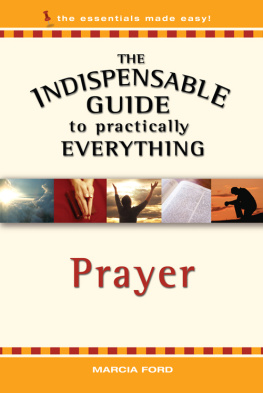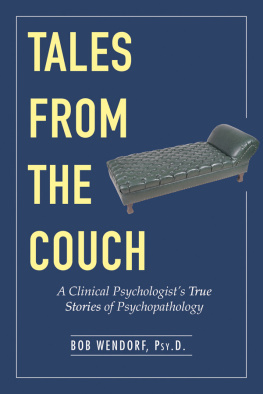Marcia Wendorf - Illustrated First Aid Guide
Here you can read online Marcia Wendorf - Illustrated First Aid Guide full text of the book (entire story) in english for free. Download pdf and epub, get meaning, cover and reviews about this ebook. year: 2009, publisher: Rampart Software Development, genre: Home and family. Description of the work, (preface) as well as reviews are available. Best literature library LitArk.com created for fans of good reading and offers a wide selection of genres:
Romance novel
Science fiction
Adventure
Detective
Science
History
Home and family
Prose
Art
Politics
Computer
Non-fiction
Religion
Business
Children
Humor
Choose a favorite category and find really read worthwhile books. Enjoy immersion in the world of imagination, feel the emotions of the characters or learn something new for yourself, make an fascinating discovery.
- Book:Illustrated First Aid Guide
- Author:
- Publisher:Rampart Software Development
- Genre:
- Year:2009
- Rating:4 / 5
- Favourites:Add to favourites
- Your mark:
- 80
- 1
- 2
- 3
- 4
- 5
Illustrated First Aid Guide: summary, description and annotation
We offer to read an annotation, description, summary or preface (depends on what the author of the book "Illustrated First Aid Guide" wrote himself). If you haven't found the necessary information about the book — write in the comments, we will try to find it.
Illustrated First Aid Guide — read online for free the complete book (whole text) full work
Below is the text of the book, divided by pages. System saving the place of the last page read, allows you to conveniently read the book "Illustrated First Aid Guide" online for free, without having to search again every time where you left off. Put a bookmark, and you can go to the page where you finished reading at any time.
Font size:
Interval:
Bookmark:

Copyright (c) 2009 Rampart Software Development. All rights reserved. For support, product upgrades and more, please visit us on the web at: www.rampartgames.com.
Use the links in the Table of Contents to navigate to any of the topics within this guide. At the end of major sections is a link, Contents, that will return you to the Table of Contents. To select a link, use the cursor bar and select wheel. To return to your original location, simply press the Back Button.
Disclaimer: This information is not intended as a substitute for professional medical advice, emergency treatment or formal first aid training. Dont use this information to diagnose or develop a treatment plan for a health problem or disease without consulting a qualified health care provider. If youre in a life-threatening or emergency medical situation, seek medical assistance immediately. Medical emergencies dont occur every day, but when they do, the information contained in this guide can help you deal with these situations.
Illustrations
First aid is the immediate care given to an injured or suddenly ill person. It provides temporary assistance until the victim can receive professional medical care. First aid can mean the difference between life and death or between temporary disability and permanent injury.
The initial minutes after an injury or medical crisis frequently are the most important. They key is knowing what to do, remaining calm and making a decision to act. To prepare for a medical emergency:
Keep a list of emergency phone numbers by your phone, include numbers for police, fire, poison control, local hospital, ambulance service, and your family physician
Keep and maintain a well-stocked first-aid kit at home, at work and in your vehicle, this will help you handle medical situations
Keep a list of all your medications in either in your wallet or on your cellphone, include drug names, strength, dosage form and regimen, also list all allergies to medications
Keep a list of emergency contacts such as family members in either your wallet or cellphone
If you have a medical condition, wear a medical-alert bracelet or necklace
Take a first-aid class
Most states have Good Samaritan Laws that grant immunity against lawsuits to those providing first aid. Good Samaritan Laws apply if the rescuer is:
Acting during an emergency
Acting in good faith
Acting without compensation
Not guilty of gross negligence toward the victim
Some occupations include a duty to act , to provide first aid to victims. These occupations include law enforcement officers, park rangers, athletic trainers, lifeguards and teachers. Once you have begun first aid on a victim, do not leave the victim unless another competent and trained person takes responsibility for them. Keep any medical information the victim gives you in the strictest confidence.
Before giving first aid, ask for the victims consent, which can be expressed verbally or with a nod of the head. If the victim is unconscious, their consent is considered implied . Based on implied consent, treat children whose parents or guardians cannot be found. Do not call your doctor, the hospital, friends, relatives or neighbors when a serious condition occurs. This only wastes valuable time. Do not transport a victim to a hospital in a private vehicle, this can present significant dangers to a victim.
The risk of getting a communicable disease from a victim is low, however, several are serious. Three serious blood borne diseases are: hepatitis B virus (HBV), hepatitis C virus (HCV), and human immunodeficiency virus (HIV). Hepatitis is a viral infection that causes inflammation and possible damage to the liver.
A vaccine is available for hepatitis B, and medical and laboratory personnel, EMS workers and police are frequently vaccinated. Currently, there is no vaccine or effective treatment for HCV. Symptoms of HBV appear within two weeks to six months after exposure. Some people remain symptom free, but are still contagious. Symptoms include:
Fatigue
Nausea and loss of appetite
Stomach pain
Yellowing of the skin and eyes
Persons infected with HIV almost always develop Acquired Immunodeficiency Syndrome (AIDS), which interferes with the bodys ability to fight off other diseases. There is no vaccine to prevent HIV infection.
Among air borne diseases, tuberculosis (TB) is a serious risk. Persons with a chronic cough, nursing home residents or homeless shelter residents are especially at risk. Symptoms of TB include:
Fatigue
Weight loss
Chest pain
Coughing up blood
To prevent blood borne or air borne diseases, wear eye covering, latex or vinyl gloves, and a surgical mask if available. If a mask is not available, wrap a handkerchief over your nose and mouth. When doing CPR, use a mouth-to-barrier device if one is available.
Most countries have emergency numbers to summon police, fire or an ambulance. Many countries have consolidated these numbers into a single emergency number. In North America, that number is 911, and in all countries in the European Union, the number is 112. In the U.S., you can dial 911 from your cell phone even if your phone has never been activated. In Europe, you can dial 112 from your GSM phone even if it doesnt have a SIM card, or if the keyboard is locked. Some European countries, such as Belgium, Spain, UK, Liechtenstein, and Austria, are reported to connect emergency calls only from phones having a valid account on their network, that is, customers and roamers only. In Latin America, GSM networks typically do not allow 112 calls without a SIM.
In many parts of the world, emergency services can identify the landline from which a 911 call has been made, even landlines having an unlisted number or blocked caller ID. They can then associate an address with that telephone number. In the U.S. the Federal Communications Commission has required that all wireless carriers be able to pinpoint the location of a cell phone dialing 911, however, that system is being implemented in phases, and may not yet be available in your area.
Whether on a landline or cell phone, when you call 911, be ready to provide the following information:
Your name and the phone number from which you are calling. This allows dispatch to call you back if you get disconnected
The victims location, Give the address, names of intersecting streets or other landmarks
Describe the nature of the emergency, e.g., someone fell off a ladder
Describe the victims condition, e.g., their head is bleeding, and identify any additional persons needing help
Do not hang up the phone unless instructed to do so by the dispatcher
Emergency numbers:
When you come upon the scene of an emergency, size it up:
Look for hazards to you, the victim or bystanders
Look for the cause or mechanism of the injury or illness
Check for additional victims
Call 911 if any of the following symptoms are present:
Fainting
Chest of abdominal pain or pressure
Sudden dizziness, weakness, or change in vision
Difficulty breathing or shortness of breath
Sudden severe pain anywhere in the body
Suicidal or homicidal feelings
Bleeding that does not stop after 10 to 15 minutes of pressure
Problems with movement or sensation following an injury
Hallucinations and clouding of thoughts
Font size:
Interval:
Bookmark:
Similar books «Illustrated First Aid Guide»
Look at similar books to Illustrated First Aid Guide. We have selected literature similar in name and meaning in the hope of providing readers with more options to find new, interesting, not yet read works.
Discussion, reviews of the book Illustrated First Aid Guide and just readers' own opinions. Leave your comments, write what you think about the work, its meaning or the main characters. Specify what exactly you liked and what you didn't like, and why you think so.













